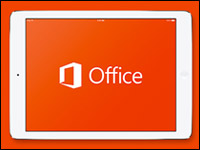
I keep wondering when Apple is going to hear the alarm and respond tothe real iPad keyboard wakeup call. Apple can point to touch-basedapps all it wants — even going so far as to partner with IBM to helpthe company deliver better enterprise mobile apps — but the factremains: Some people just want to type on their damn iPad, and Apple’stouchscreen solutions suck.
I also keep hoping that Apple will turn its design acumen andconsiderable tech and manufacturing resources toward building a real, physical keyboard specifically for use with iPads. Itcould be a case or it could be a cover like the one that Microsoftmanufactures for its Surface Pro 3.
It needs to be thin, light,and integrated. The current Bluetooth keyboard that you can pair withan iPad? The keys are fantastic, of course, but it’s clunky anddoesn’t really connect seamlessly to the iPad in any physical way,much less make sense for travel.
A real physical keyboard is the design challenge that Apple needs tothrow a bit of time and effort at — and just complete thejob.
Why Not 3rd-Party Keyboards?
The world is littered with dozens of keyboard/case/cover solutions forthe iPad, manufactured by third-parties. Some of these are good, manyhave flaws, and most don’t have a particularly great balance ofquality and cost. Which one should a consumer buy?
There are somany different choices, some with cramped and mushy keys, some thatforce your iPad into a clunky laptop form factor, and some that justcost too much. A consumer in this space has choices — but really, Ithink a good many consumers end up getting that deer-in-the-headlightslook of frozen confusion. So they don’t act at all.
Enter Schools
I’m wondering if Apple is paying attention to what’sgoing on in schools these days. While it has sold 13 million iPadsto education customers globally — and while the iPad is thetablet of choice in 85 percent of school districts in the United States, atleast a handful of schools seem to be rethinking their iPadinvestments.
In fact, some schools are selling their iPads and ditching their tabletprograms in favor of Chromebooks, according to a reasonablyresearched piece in The Atlantic.
Chromebooks are essentially very low-costlaptops that run only when connected to the Internet, with access tofiles and apps from the cloud.
Why the switch? Mostly, it seems, because sometimes students have to work — towrite, to type. You can build all the pretty Keynote presentations youwant, and swipe through narrated content about lemurs in Madagascar, but kids ultimately are going to need to write essays and reports — and yes,blog. Even for super adaptable kids, typing on a real physicalkeyboard is easier and more efficient.
Consider this tidbit from Meghan Murphy’s Atlantic report:”While nobody hated the iPad,by any means, the iPad was edged out by some key feedback, said JoelHandler, Hillsborough’s director of technology. Students saw the iPadas a ‘fun’ gaming environment, while the Chromebook was perceived as aplace to ‘get to work.’ And as much as students liked to annotate andread on the iPad, the Chromebook’s keyboard was a greater perk –especially since the new Common Core online testing will require akeyboard.”Ouch.
Plus, writing is a fundamental skill and learning tool in andof itself. The very act of writing teaches kids something about thesubjects they’re studying, and sometimes it even teaches them aboutthemselves — if not to imagine how someone else might feel.Think empathy isn’t important in education? What are the latestheadlines from our war zones these days?
Back to Apple’s Ability to Understand
Meanwhile, IBM wants to create better touchscreen apps so it can sellmore Big Data analytics applications, and it turned to Apple to getsome iPad tablet love. Nice. I get that — but plenty of business usersneed to type, too, in more than 140-character blips.
In Apple’s most recent financial call with analysts, CEO TimCook highlighted the company’s efforts at continuity — of making itsdiscreetly different devices work really well together so humans couldtransition between them seamlessly.
“Customers can start an activity like writing an email on one deviceand pass it to another, picking up where they left off without missinga beat,” he said. “They will even be able to make and receive iPhonecalls on their Mac with just a click.”
This is cool, definitely, and I’m looking forward to it, but it fallsshort in situations where customers want their tablet to do more.
What’s worse than this desire of wanting a more versatile and productive iPad?
Knowing that it’s entirely possible.
Heck, if Microsoft can make a decent keyboardcover, you would think Apple could, right?
Now, I’m not trying to say that Apple customers want to buy a singledevice to do everything. Just type — that’s it. Easily. With littleeffort. Not with the need to figure out and acquire third-party standsand keyboards.
You want to make these technology decisions easy foreducational institutions? It’s dirt simple: Remove the most commonbarrier a parent or educator will imagine when they think about iPadsin the classrooms. I bet that most every gut response comes back totyping.
But… isn’t Apple improving the typing experience in iOS 8 withQuickType and support for third-party (app-based) keyboards?Yes.
Is it welcome? Yes. Is it enough?
Excuses, Excuses, Excuses
iOS 8 will predictwhat you’re going to type and offer suggestions for full wordsbased on the context of what you’re typing — as well as whomyou’re typing a message to. So a message to a friend will result inword options that will be different than the words offered for a message to yourboss. As you use your iOS device, it will get smarter about predictingwhich sorts of words you actually use.
Fantastic for the iPhone!
Still, I expect my iPad to be more powerful. By its very nature, an iPadis not a single-purpose tool. No one looks at an iPad and thinks,”This is good for one thing only.” How about a hammer? A hammer poundsnails. One tool, one job. An iPad is more than the sum of its parts,but Apple seems to refuse to acknowledge the typing issue, despitehaving sold 225 million iPads.
Why bother making something better if you don’t have to?
Great point. Apple will face exactly zero pressure to deliver any sortof real keyboard solution until iPad sales falter and customers turnto alternate solutions.
Hmm. Is that happening in large enough numbers yet? No. While Apple’siPad sales saw a small decline in the last quarter, that declinelikely has more to do with market saturation and iPads that have longlifespans.
What about Chromebooks in schools? Sorry, I don’t think thenumbers are painful to Apple. Remember, the education marketrepresents less than 6 percent of Apple’s total iPad sales, which likely were discounted below retail prices, making their contributionto Apple’s bottom line less than those sold to consumers.
Does Apple Really Care About iPads in the Enterprise?
Here’s the real question: If Cook truly believes that the business”opportunity is huge,” as he noted in Apple’s Q3 conference call withinvestors, is Apple willing to address the most obvious weakness ofthe iPad — the lack of a great physical keyboard?
I’m not so sure. As a business tactic, if Apple can sell the iPad as asupremely mobile device that is characterized by a different sort ofwork, a different sort of app, then why give customers the chance toturn to an iPad for the vast majority of their job’s computingrequirements? Why not entice them to buy both iPads and Macs andiPhones for ultimate continuity?
If Apple really wants the enterprise opportunity to explode, theanswer is simple: Sort out the keyboard problem. It is the one glaringissue that everyone can see, that anyone who has ever struggled typingon an iOS screen has experienced. Fix that, and resistance tobroader enterprise — and even school — adoption will fade away.
So, is there hope for students and business users who occasionally needto type more than a few sentences? In the Q3 call, Cook also said thatApple felt there was “significant innovation that can be brought tothe iPad and we plan on doing that.”
OK then.






















































Yeah, I totally see your point. Full-featured tablets with keyboards are just flying off the shelves.
http://www.citeworld.com/article/2461707/tablets/microsoft-has-lost-about-17-billion-on-surface-so-far.html
See, the problem is that a tablet’s primary appeal is the simplicity. Those who need to get more complicated work done, need something else, like a laptop.
BTW, you seem to be unaware that a ChromeBook is actually a low-end laptop and not a tablet. Comparing sales of Chromebooks to tablets is misleading and pointless. Instead, compare sales of the MacBook Air (Apple’s low-cost laptop) to the ChromeBook and you’ll see a very different picture emerging.
Hey AndreRichards–
Thanks for extending the conversation.
I don’t believe that a lot of people want a Microsoft Surface (it’s still encumbered by, well, Microsoft) . . . and I agree with you that the primary appeal of a tablet is simplicity. Nor do I disagree that complicated work is best done with a laptop.
What I had hoped to make clear is that there is a segment of iPad owners — not "tablet" owners, but iPad owners — who can clearly see the benefits of having an Apple-designed integrated physical keyboard. These people can do much of their work on an iPad . . . and would like to do even more — the stuff that requires more serious typing.
As for school districts that would like to go with — or continue using — the iPad for all its awesomeness . . . I’m sure that some see the lack of a physical keyboard as a hinderance, hence turning to something else, like Chromebooks.
For this segment of iPad users, Apple can very easily a) let them do more work on their iPad, which they _want_ to do, and b) remove doubt about the iPad being a somewhat "limited" platform for computing in schools.
Personally, I’d really like Apple to take a stab at this challenge. I’ll always have a MacBook Pro, but there’s plenty of situations where I’d prefer to use my iPad only . . . but just can’t quite get there. For instance, it’s really annoying to lose screen space every time I want to type something on my iPad’s touchscreen. I want to see Apple’s physical iPad keyboard design choices, which will result in increased iPad usage from myself — and I believe it will also result in increased usage from others, too.
–Chris